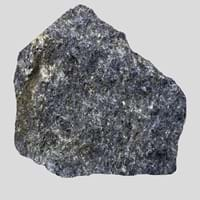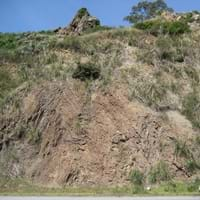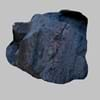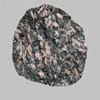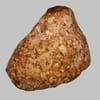Blueschist is a metamorphic rock which is generally blue in color and is formed under conditions of high pressure and low temperature 0
From French schiste, Greek skhistos i.e. split 0
Durable Rock, Medium Hardness Rock 0
Fine Grained Rock, Medium Grained Rock, Opaque Rock 0
Blue, Bluish - Grey, Purple, Shades of Blue 0
Floor Tiles, Flooring, Homes, Hotels, Kitchens 0
Garden Decoration, Office Buildings 0
As Dimension Stone, Cobblestones, Rail Track Ballast, Roadstone 0
Artifacts, Monuments, Sculpture 0
Cemetery Markers, Commemorative Tablets, Creating Artwork, Curling, Tombstones 0
Has High structural resistance against erosion and climate, Very fine grained rock 0
Archaeological Significance
0
Blueschist forms due to the metamorphism of basalt and other rocks with similar composition at high pressures and low temperatures and approximately corresponding to a depth of 15 to 30 kilometers and 200 to 500 °C. 0
Albite, Chlorite, Epidote, Garnet, Glaucophane, Lawsonite, Muscovite or Illite, Quartz 0
Aluminium Oxide, CaO, Iron(III) Oxide, FeO, Potassium Oxide, MgO, MnO, Sodium Oxide, Phosphorus Pentoxide, Silicon Dioxide, Titanium Dioxide 0
Chemical Erosion, Coastal Erosion, Water Erosion, Wind Erosion 0
Impact Resistant, Pressure Resistant 0
Deposits in Eastern Continents
0
Egypt, Ethiopia, South Africa 0
France, Greece, Iceland 0
Deposits in Western Continents
0
Deposits in Oceania Continent
0
Learn more about Properties of Blueschist
What is Blueschist? In this section, we will learn more about properties of Blueschist i.e. physical and thermal properties. Physical properties of Blueschist include Color, Streak, Hardness, Structure, Cleavage, Fracture, Luster, Specific Gravity etc. The strength of Blueschist is Not Available. Streak of Blueschist is white to grey while its cleavage is slaty. Luster of Blueschist is dull and its fracture is conchoidal. Blueschist is opaque in nature. Know all about Blueschist, What is Blueschist, its composition, features, facts and reserves in next sections.
Know about Composition of Blueschist
What is Blueschist composed of? Get to know about composition of Blueschist here. Blueschist definition gives information about the Formation of Blueschist and its composition.The composition of Blueschist can be further divided into mineral and compound content. The mineral content of Blueschist rock includes Albite, Chlorite, Epidote, Garnet, Glaucophane, Lawsonite, Muscovite or Illite, Quartz and The compound content of Blueschist rock includes Aluminium Oxide, CaO, Iron(III) Oxide, FeO, Potassium Oxide, MgO, MnO, Sodium Oxide, Phosphorus Pentoxide, Silicon Dioxide, Titanium Dioxide. Almost all rocks undergo transformation process. Know all about Blueschist rock in next section.
